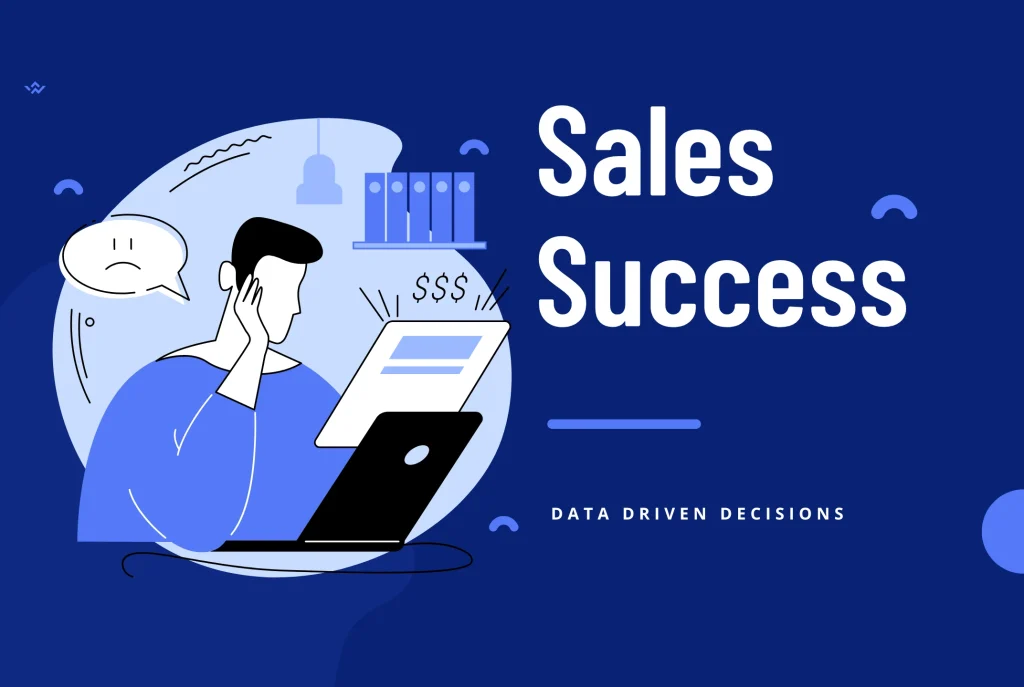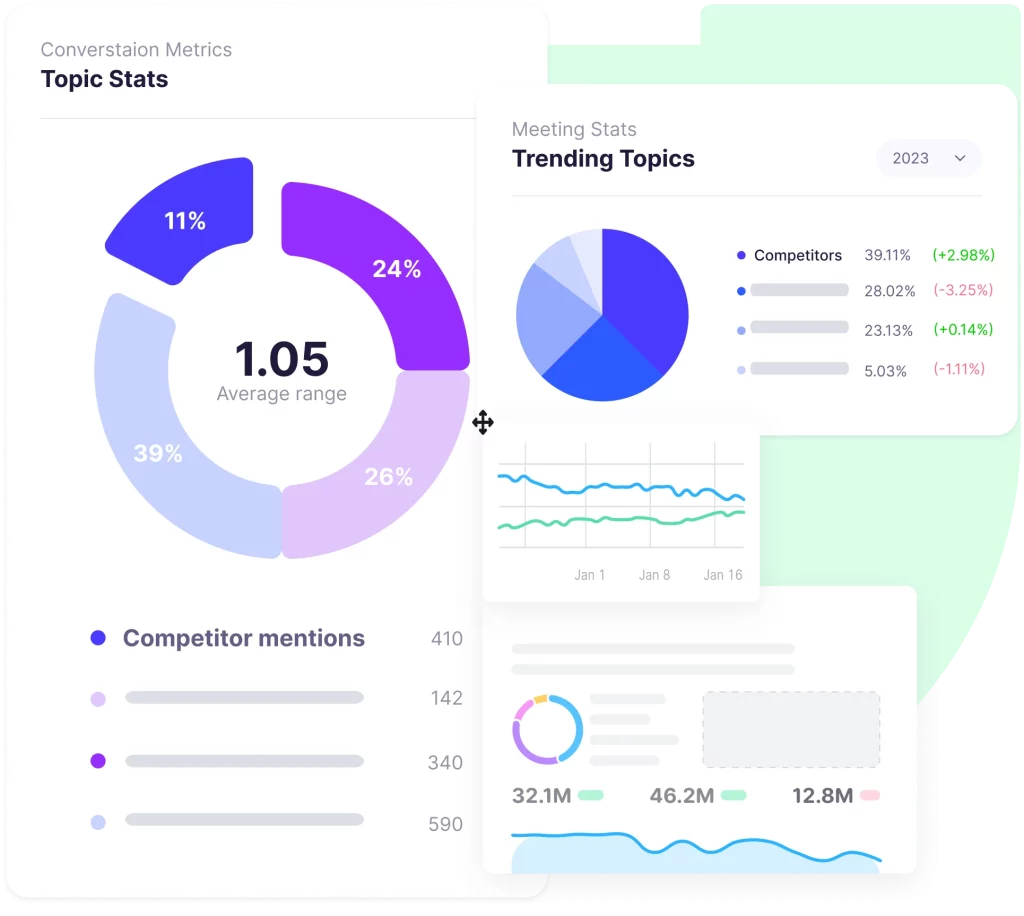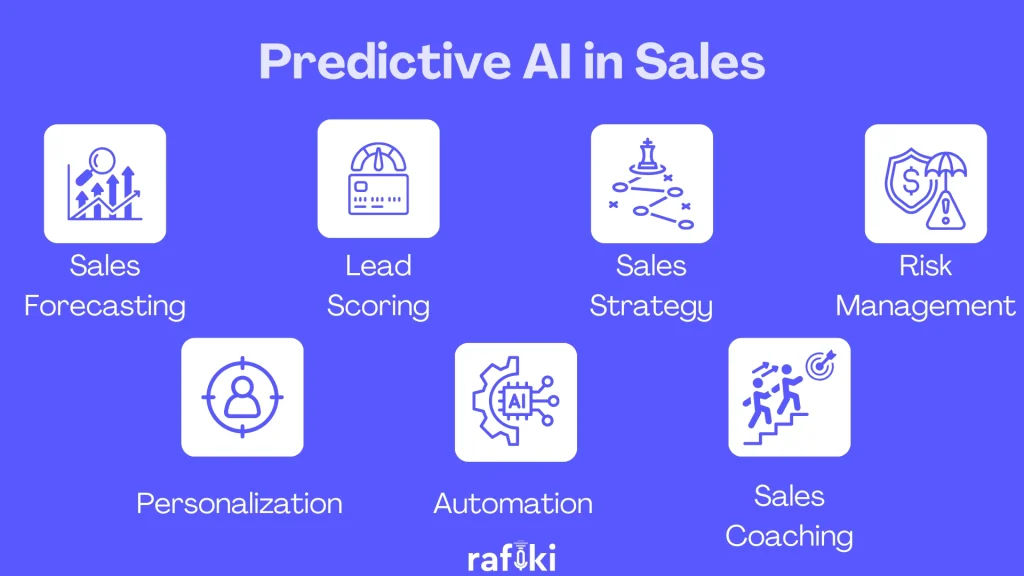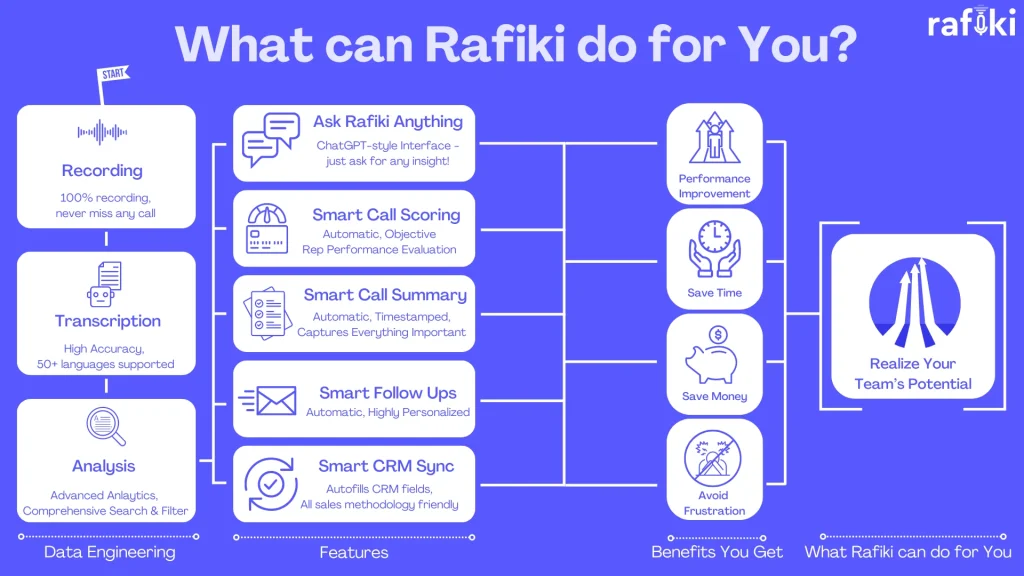Why Rafiki
Pricing


Pricing
Solutions

RevOps Leaders
Synchronize revenue generating functions

SDR Leaders
Get your team aligned and Coach your Reps 3x faster at scale

Sales Leaders
Unlock pipeline truth, drive confident forecasts

In the modern sales landscape, data has become an essential asset. A recent survey by Gartner found that organizations prioritizing data-driven strategies are nearly three times more likely to exceed their customer acquisition targets. Moreover, McKinsey reports that companies leveraging data and analytics in sales can generate up to 50% more revenue, emphasizing the significant impact of data-driven approaches. Data driven sales refers to the practice of using data to guide sales strategies and decisions. This approach involves collecting, analyzing, and leveraging data to understand customer behavior, forecast trends, and make informed decisions. This method empowers sales teams to target the right prospects, personalize interactions, and ultimately close more deals.
The purpose of this blog post is to delve into the concept of data driven sales. We will explore how data analytics can transform sales strategies, improve decision-making, and drive better sales performance. From understanding different types of sales data to implementing advanced tools and techniques, this guide will provide you with the insights needed to harness the power of data in your sales process.
Data-driven sales use data to inform and guide sales strategies and decisions. This method relies on empirical evidence rather than intuition, allowing sales teams to make informed choices based on real-time data and trends.
Traditional sales strategies relied heavily on intuition and personal experience. Sales reps would use their judgment to decide which leads to pursue and how to approach potential customers. However, the introduction of digital tools and data analytics has revolutionized this approach. Modern sales strategies are now heavily data-driven, utilizing customer data, sales metrics, and market trends to make informed decisions. This evolution has led to more precise targeting, efficient processes, and improved sales outcomes.
Improved Decision-Making: Data-driven sales provide clear insights into customer behavior and preferences, enabling sales teams to make better decisions.
Enhanced Customer Targeting: By analyzing data, sales teams can identify high-value prospects and tailor their approach to meet specific needs.
Increased Sales Efficiency: Automation of routine tasks and data analysis helps streamline sales processes, allowing reps to focus on high-impact activities.
Higher Conversion Rates: Targeted strategies based on data insights lead to more effective sales pitches and higher conversion rates.
Better Forecasting: Predictive analytics enable sales teams to forecast trends and prepare for future opportunities, ensuring they stay ahead of the competition.
By adopting a data-driven sales approach, organizations can enhance their sales performance, optimize their strategies, and achieve better results.
Sales teams utilize various types of data to inform their strategies. Understanding these data categories is crucial for effective sales planning and execution.
Demographics: This includes information like age, gender, and location. Knowing demographic details helps in tailoring marketing messages and sales pitches to specific customer segments.
Behavior: This involves tracking interaction history and purchase patterns. Understanding customer behavior provides insights into their preferences and buying journey, enabling more personalized and timely engagements.
Metrics: Key performance indicators such as conversion rates, average deal size, and sales velocity. These metrics help in assessing the effectiveness of sales strategies and identifying areas for improvement.
Pipeline: Details about the stages of the sales funnel and the movement of prospects through these stages. Analyzing pipeline data helps in forecasting sales and managing resources efficiently.
Trends: Information on market shifts and seasonal changes. Keeping track of market trends helps in adjusting strategies to meet current demands and capitalize on emerging opportunities.
Competition: Analysis of competitors’ strategies, market positions, and performance. Competitive analysis is vital for understanding market dynamics and identifying unique value propositions.
Each data type offers unique insights. Together, they provide a comprehensive view of the sales landscape, enabling informed decision-making and strategic planning.
Effective data-driven sales rely on the right tools. Various technologies help sales teams collect, analyze, and utilize data effectively.
CRMs store and organize customer information, tracking interactions and managing relationships. Popular CRM systems like Salesforce and HubSpot provide a centralized platform for managing customer data.
These platforms analyze sales data, providing insights into performance and trends. Tools like Rafiki, Clari and InsightSquared help sales teams monitor key metrics and improve decision-making.
Visualization tools like Tableau and Power BI make complex data easy to understand by transforming it into visual formats such as charts and graphs. This helps sales teams quickly identify patterns and insights.
AI tools predict trends and automate data analysis. Machine learning algorithms can identify patterns in customer behavior and sales performance, providing predictive insights that enhance decision-making. Tools like Einstein Analytics and Microsoft Dynamics 365 use AI to offer advanced analytics capabilities.
Using these tools, sales teams can harness data effectively, transforming raw data into actionable insights that drive sales performance.
Proper data collection and management are foundational to effective data-driven sales. Ensuring data quality and accuracy is critical for reliable analysis and decision-making.

Following these practices ensures the collection of high-quality data, which is essential for accurate analysis and effective decision-making in sales strategies.
Analyzing sales data is crucial for transforming raw information into actionable insights. Different types of data analytics provide various perspectives and benefits, helping sales teams make informed decisions.

By leveraging these different types of data analytics, sales teams can make data-driven decisions that enhance their effectiveness, optimize their strategies, and ultimately drive better sales outcomes. This integrated approach ensures a holistic understanding of the sales landscape, leading to more informed and strategic decision-making.
Data insights can significantly enhance sales strategies, helping to personalize interactions and optimize efforts for better outcomes.
Personalizing Customer Interactions
Use customer data to tailor communications. Personalized messages increase engagement and conversion rates by addressing specific needs and preferences.
Identifying High-Value Leads
Data can highlight which leads are most likely to convert. Focus efforts on these high-value prospects to maximize sales efficiency and effectiveness.
Enhancing Cross-Selling and Up-Selling
Analyze purchase history to identify opportunities. Suggest relevant products or upgrades to existing customers, increasing revenue per customer.
Improving Sales Team Performance
Use data to identify skill gaps and areas for improvement. Provide targeted training and support to enhance overall performance with Rafiki.

By applying these data insights, sales teams can refine their strategies, leading to better outcomes and higher sales.
Leveraging data analytics is essential in modern sales. Understanding customer, sales, and market data provides a comprehensive view of the sales landscape. Tools like CRM systems, analytics platforms, and AI help in collecting and analyzing data effectively.
Ensuring data quality through consistent collection, regular validation, and secure storage is crucial. Different types of analytics—descriptive, predictive, and prescriptive—offer unique insights that improve decision-making and strategy optimization.
Boost Sales Performance
By applying data insights, sales teams can personalize interactions, target high-value leads, enhance cross-selling, and improve performance, leading to better sales outcomes and increased efficiency. Embracing data-driven sales strategies drives growth and enhances customer satisfaction.